My Cats Ear Smells Funny and Keeps Licking
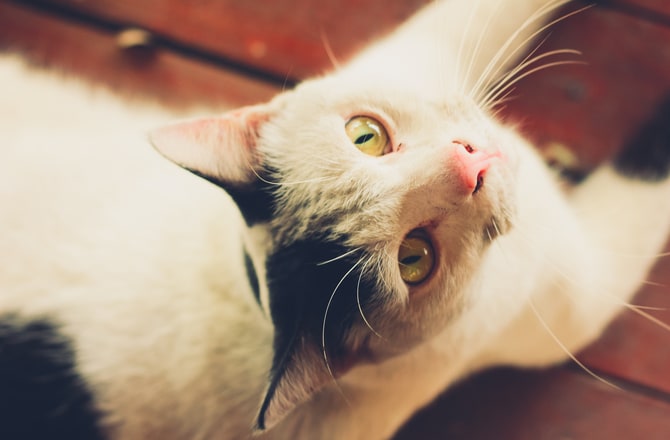
Common Ear Problems in Cats
By Jennifer Coates, DVM
Cats have only a few ways to show us that their ears are bothering them. The most common symptoms of ear problems – scratching and head shaking – can be caused by many different diseases, all of which are treated differently. But take heart. There are a few "tricks of the trade" that will help you differentiate between the most common ear problems in cats and give you the information you need to get your cat on the road to recovery. Read on to learn more.

Ear Mites
Ear mites are tiny parasites that like to live in and around cat ears. They are easily passed between cats and are most commonly diagnosed in kittens. Ear mites make cats shake their heads and scratch themselves around the ears, head and neck. To determine if your cat has ear mites, check your cat's ears for material that looks like coffee grounds. Gently take out a chunk and put it on a dark background. Live mites look like white, moving specks about the size of a pin head (use a magnifying glass if you have one). A veterinarian will confirm your diagnosis by looking at a sample of debris under a microscope.
Over-the-counter cat ear mite treatments are available and work if you closely follow the directions, but your veterinarian can more thoroughly flush out your cat's ears and prescribe medications that will eliminate your cat's ear mites with just one application. To eradicate ear mites from your home, make sure that all pets receive treatment.
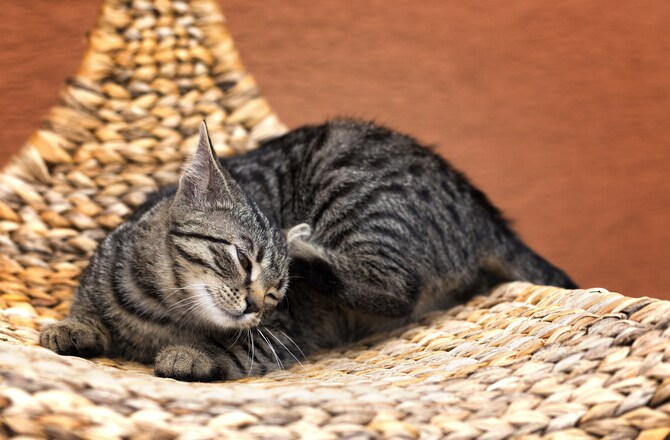
Infections of the Outer Ear
Bacterial and fungal (yeast) infections of the outer ear often look quite similar to ear mite infestations. The symptoms – scratching and head shaking – are essentially the same, but if you look closely at the ears, you may notice some differences. Ear infections often cause a cat's ears to become more red and swollen than do mite infestations, and the discharge from an infected ear tends to have a distinctly foul odor.
To appropriately treat an ear infection, a veterinarian first has to microscopically examine a sample taken from the ears to determine whether yeast or bacteria (and what type of bacteria) are to blame. The doctor will then thoroughly clean out your cat's ears, take a look inside to determine how much damage has been done, and then prescribe appropriate treatment, which may include ear cleaners, topical medications, oral anti-infectives, pain relief and anti-inflammatories based on the specifics of your cat's case.
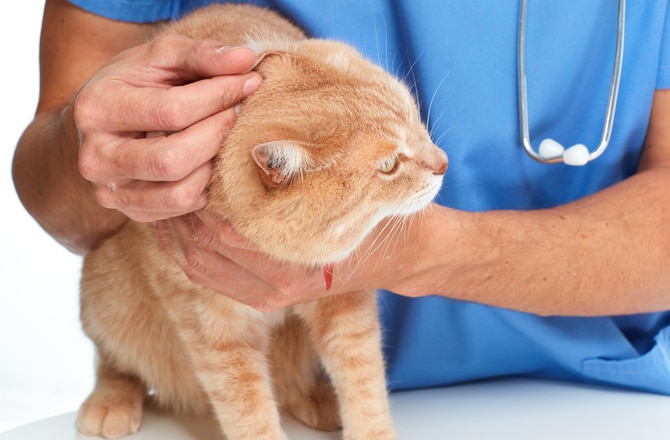
Middle and Inner Ear Infections
Sometimes the middle and inner parts of a cat's ear become infected, either because an outer ear infection has moved deeper into the ear or because bacteria has spread through the bloodstream or Eustachian tube (a tube that connects the middle ear and the back of the nose).
Symptoms of middle and inner ear infections vary depending on exactly what part of the ear is involved and whether one or both ears are affected, but owners may notice head shaking, rubbing at the ears, a head tilt, decreased appetite, lethargy, a drooping on one side of the face, squinting, a raised third eyelid, unequal pupil sizes, abnormal eye movements, difficulty walking or poor hearing.
Veterinarians diagnose middle and inner ear infections using a combination of a cat's symptoms, a physical exam (including an ear exam) and x-rays, CT scans or MRIs of the affected areas. Treatment may include long term treatment with systemic antibiotics, topical medications and surgery.
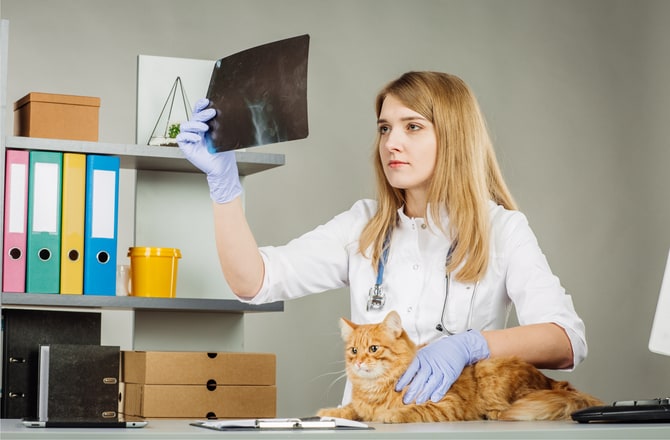
Polyps
Nasopharyngeal polyps are benign growths within a cat's middle ear or Eustachian tube. They can cause cats to develop middle ear infections (as described in the previous slide) as well as loud breathing and nasal discharge. To diagnose a nasopharyngeal polyp, a veterinarian will anesthetize the cat, thoroughly examine the ears and nasopharynx (the area above the soft palate within the mouth), and take x-rays. Surgery to remove the polyp is usually curative, and as long as the whole polyp is taken out, it should not return.
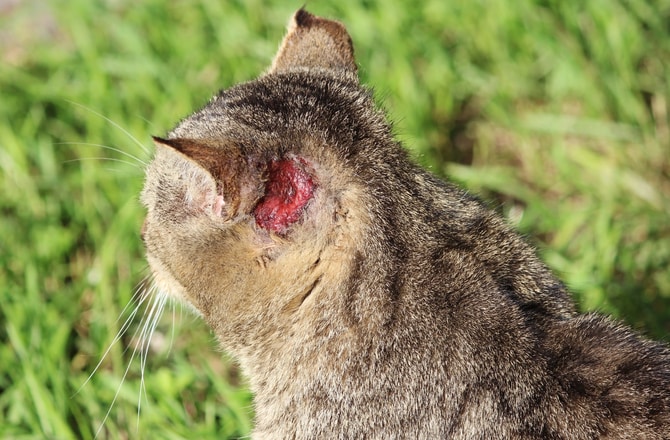
Mange
Some types of mange mites, like Notoedres cati, seem to prefer to live on the skin around the head and ears of cats. Mite infestations can make cats so itchy that they scratch to the point of self-mutilation. The skin in affected areas can also become thickened, scaly and covered with crusts. Cats may also become systemically ill and even die in severe cases. To plan appropriate treatment, a veterinarian must examine skin scrapings under a microscope to identify the type of mite that is present. Then the doctor can prescribe the right medication to kill the parasites.
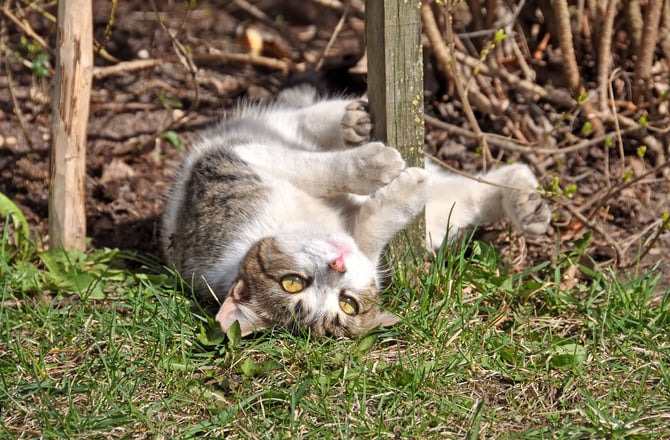
Foreign Bodies
Cats, particularly those who go outdoors, sometimes get grass awns and other foreign bodies lodged in their ears. Cats with foreign bodies in their ears will usually shake their heads and paw at their ears.
If you look in your cat's ear and can easily see a large piece of grass or something else that shouldn't be there sticking out, you can try to gently pull it out with your fingers or a pair of tweezers. However, if you feel any resistance as you pull or your cat is uncomfortable, stop and call your veterinarian immediately. The doctor can sedate your cat, safely remove the foreign body, examine the ear for damage and prescribe any necessary treatment to promote healing.
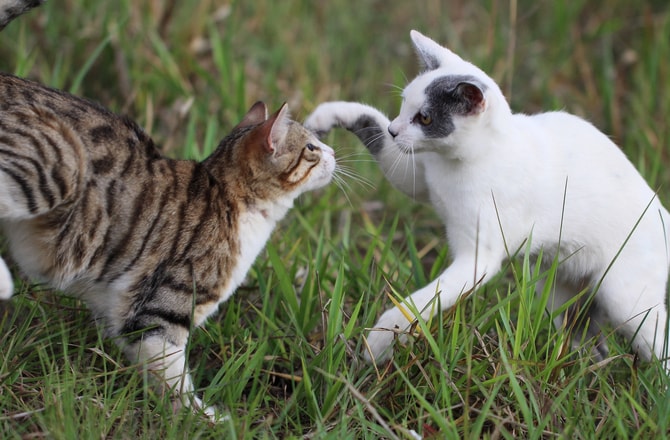
Bites and Scratches
Cats who go outside or live in a multi-cat household are also at higher than average risk for trauma to their ears. Bites and scratches are often directed towards this area and can result in lacerations, punctures and other types of wounds that can subsequently become infected.
You can help minor abrasions and cuts heal by cleaning the area with a dilute povidone-iodine or chlorhexidine antiseptic solution a few times a day, but deeper wounds or those that fail to improve with home treatment should always be evaluated by a veterinarian.

Allergies
Cats with allergies, particularly food allergies, often develop itchiness that is focused around the head and ears. If your cat is scratching in this area and no obvious cause can be identified, an allergic reaction may be to blame. Switching to a limited antigen diet for six to eight weeks (and feeding absolutely nothing else other than water) might help you determine if your cat has a food allergy, but keep in mind that the best "hypoallergenic" cat foods are only available through veterinarians.
Of course, cats can develop other problems that affect their ears, including inflammatory disorders, immune-mediated conditions, tumors and more. If you have concerns about the health of your cat's ears (or any other body part!), make an appointment with your veterinarian.
Source: https://www.petmd.com/cat/slideshows/8-common-ear-problems-cats
0 Response to "My Cats Ear Smells Funny and Keeps Licking"
Post a Comment